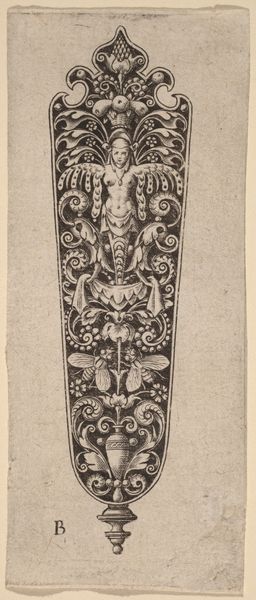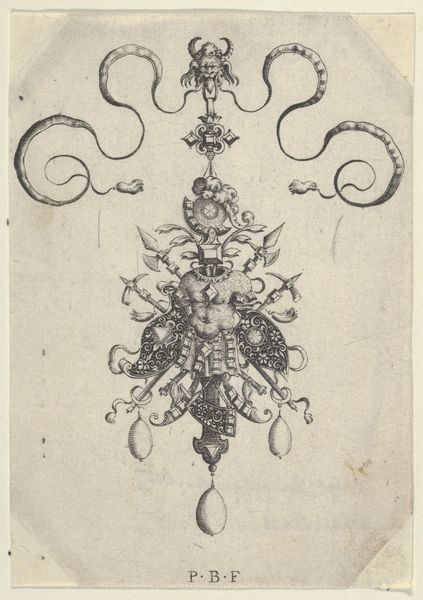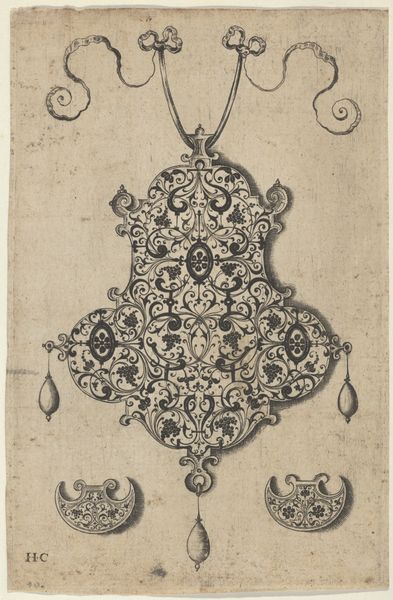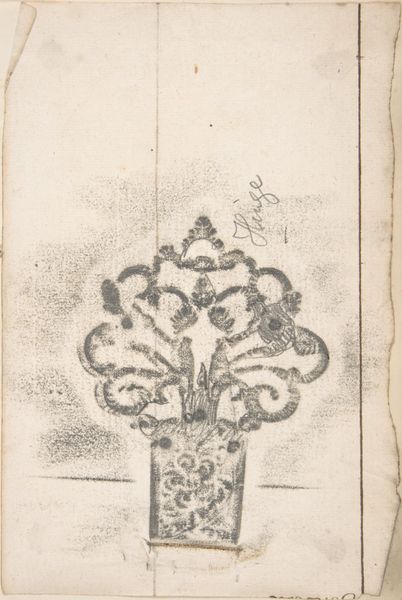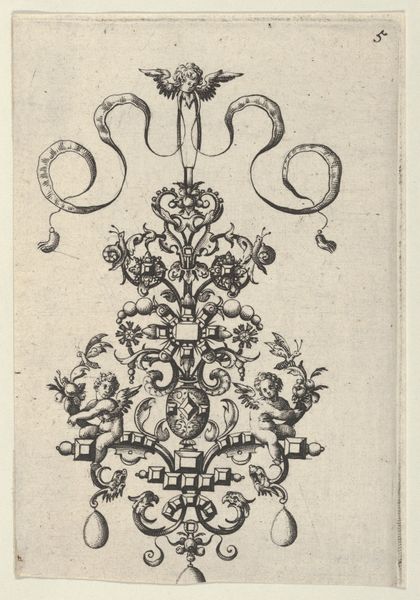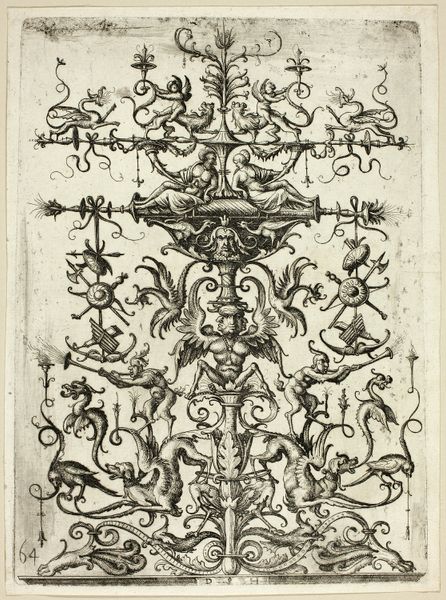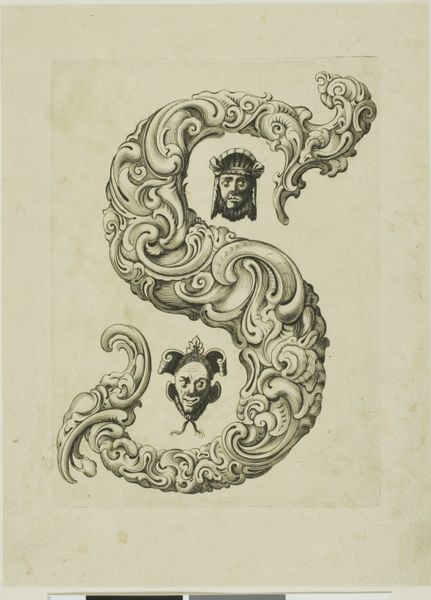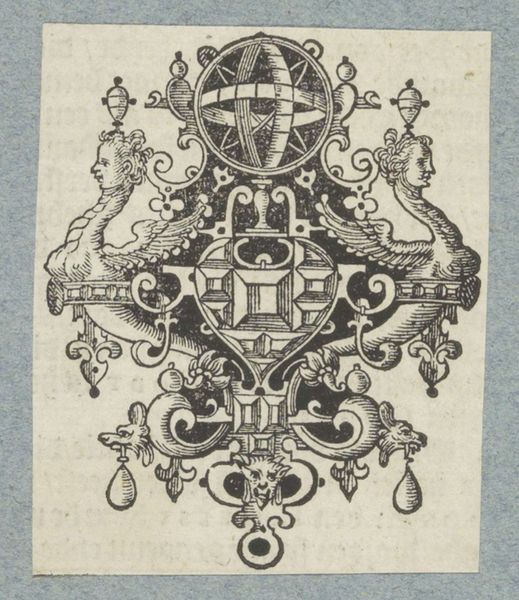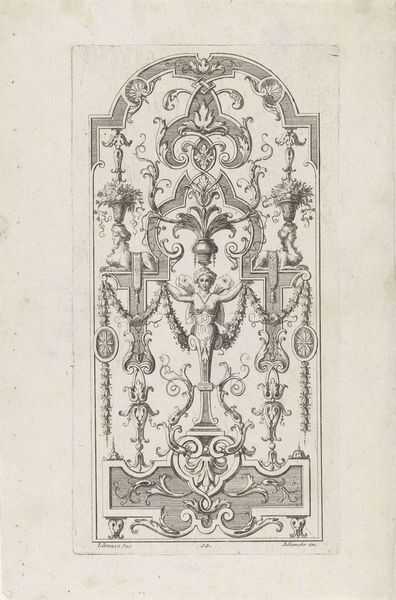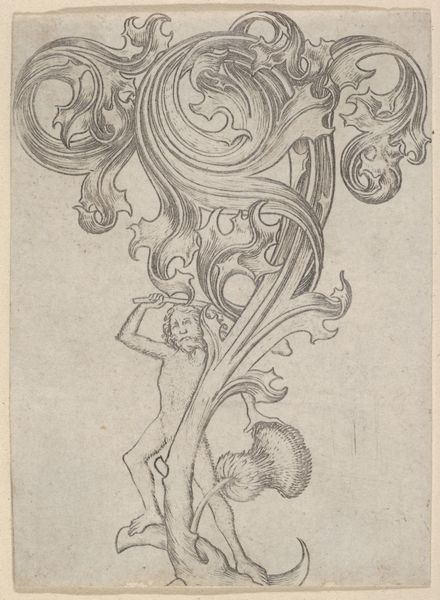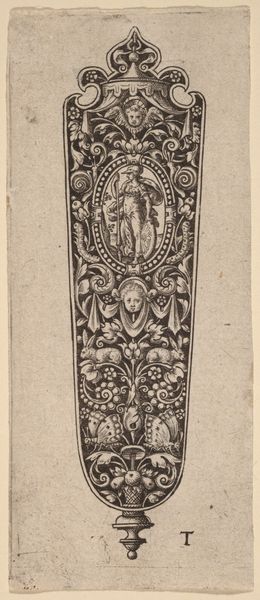
Covered Goblet, Pear shaped bidy on shaft og twisted tree-trunk with bear treed by dog 0-0
0:00
0:00
drawing, print, engraving
#
drawing
# print
#
geometric
#
line
#
engraving
Dimensions: Sheet (Trimmed): 11 9/16 × 7 5/16 in. (29.3 × 18.6 cm) Plate: 10 13/16 × 4 in. (27.5 × 10.2 cm)
Copyright: Public Domain
Curator: This engraving presents a design for a "Covered Goblet, Pear shaped body on shaft of twisted tree-trunk with bear treed by dog." It resides here at the Metropolitan Museum of Art. The author, Jonas Silber, is presently unknown. What’s grabbing you about it initially? Editor: The overwhelming detail is arresting, though rendered only in linear form. It reminds me of the decorative programs of the Renaissance, yet executed with the stark precision of printmaking. It's simultaneously elegant and almost violently ornate. Curator: Consider the implications of producing this not as a goblet itself, but as an engraving. Silber offers not an object, but a model for one. What does this reveal about artistic labor? The print suggests not solely skilled handcrafting, but rather the *idea* as a commodity. Editor: Yes, the line work is meticulously consistent throughout the composition. We're not observing spontaneous gestures of the hand but rather controlled lines articulating form, lending this piece the sense of a blueprint. And look closely at how each section utilizes contrasting ornamental motifs: organic forms on the base transition to near-geometric arabesques near the top. Curator: Precisely. And consider who might consume such a print. This isn't simply a presentation of an exquisite luxury good but is circulated possibly among other artists, or goldsmiths. Silber positions himself as a mediator, his labor the crucial factor that enables further production. Editor: Beyond its utilitarian function, let’s discuss this work purely as visual experience. The starkness is very powerful—the limited tonal range results in this sense of pure shape, almost weightless. What’s more, the eye can lose itself, moving between animal struggle on its pedestal to the detached face in the chalice. Curator: It prompts reflection on hierarchies in production – artisan versus designer, for example, when applied to the era. We see power dynamics replicated within the object itself: the dog, the bear, the refined face, all staged within Silber’s broader social landscape. Editor: In short, what begins as a detailed design speaks volumes about how artistry reflects structural forces in our world. Thank you. Curator: Indeed; pondering its role is crucial. Viewing the piece prompts a greater awareness about our history.
Comments
No comments
Be the first to comment and join the conversation on the ultimate creative platform.
